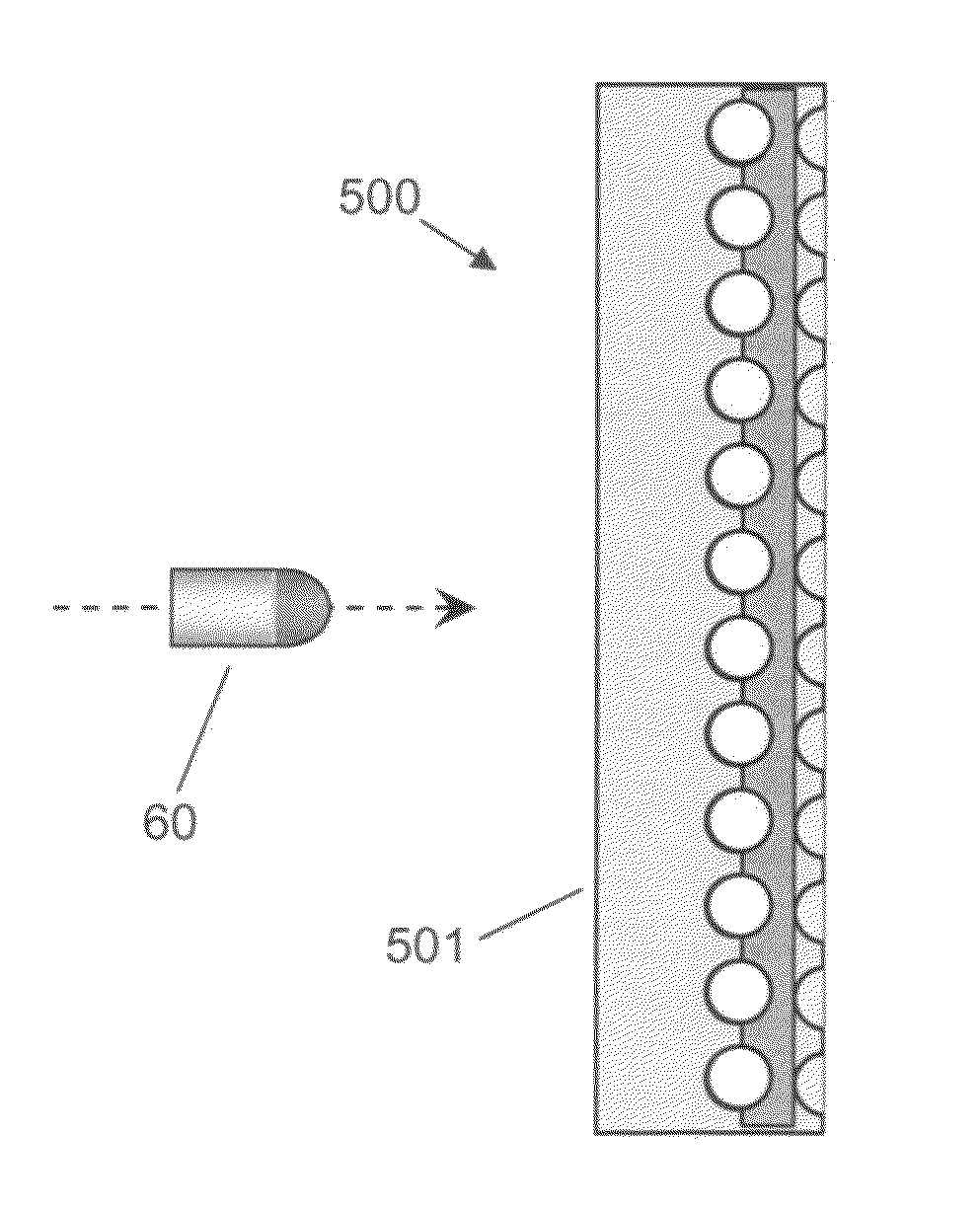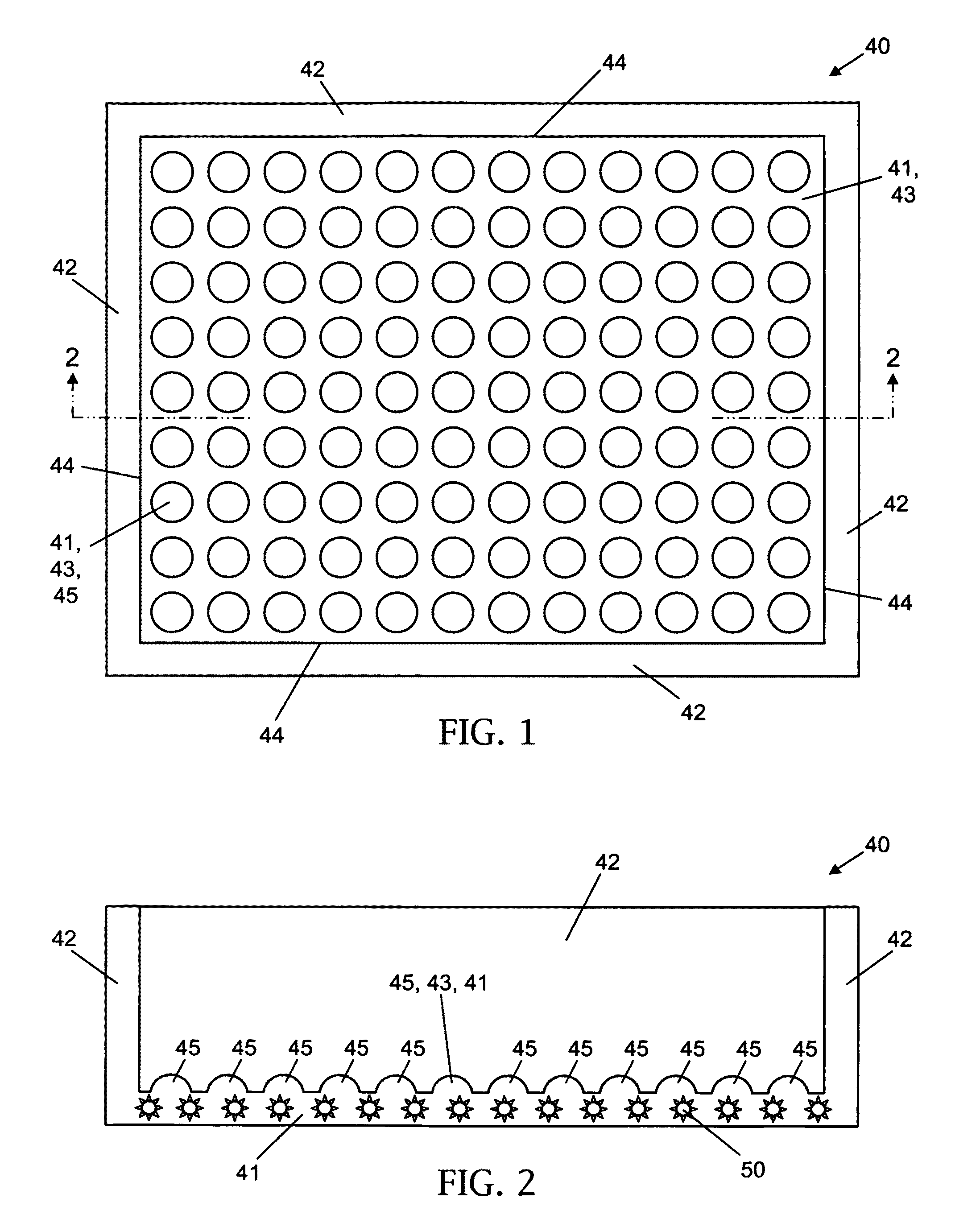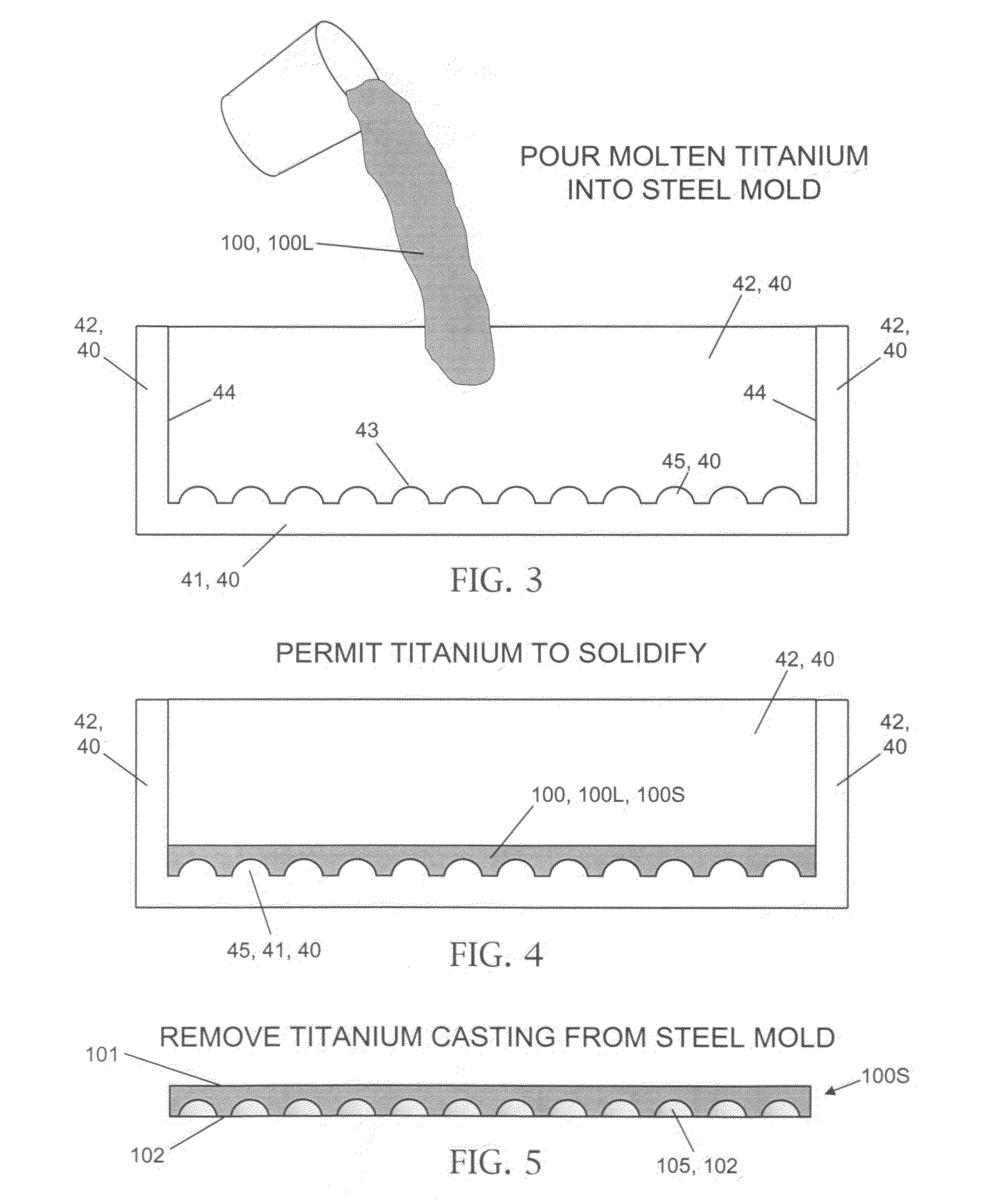Composite armor having a layered metallic matrix and dually embedded ceramic elements
- Summary
- Abstract
- Description
- Claims
- Application Information
AI Technical Summary
Benefits of technology
Problems solved by technology
Method used
Image
Examples
Embodiment Construction
[0053]Referring now to FIG. 1 and FIG. 2, steel tray-like mold 40 includes a horizontal base plate portion 41 and four vertical wall portions 42. The inside surfaces of mold 40 include the “pimpled” upper surface 43 of horizontal base plate portion 41 and the respective smooth (even) side surfaces 44 of vertical wall portions 42. The pimpled upper surface 43 of base plate portion 41 is characterized by a regular pattern of congruent elevations 45, each of which describes the geometric shape of a sphere that is horizontally truncated below its apex, at or above its horizontal planar bisector. Associated with mold 40 (for instance, coupled with base plate portion 41) are heating devices 50.
[0054]With reference to FIG. 3 through FIG. 9, the interior surfaces (including upper surface 43 and side surfaces 44) of mold 40 are coated, as appropriate, with a mold release agent (e.g., zirconium oxide or zirconia). Heating devices 50 serve to extremely raise the temperature of mold 40 and ther...
PUM
| Property | Measurement | Unit |
|---|---|---|
| Diameter | aaaaa | aaaaa |
| Metallic bond | aaaaa | aaaaa |
| Melting point | aaaaa | aaaaa |
Abstract
Description
Claims
Application Information
 Login to View More
Login to View More - R&D
- Intellectual Property
- Life Sciences
- Materials
- Tech Scout
- Unparalleled Data Quality
- Higher Quality Content
- 60% Fewer Hallucinations
Browse by: Latest US Patents, China's latest patents, Technical Efficacy Thesaurus, Application Domain, Technology Topic, Popular Technical Reports.
© 2025 PatSnap. All rights reserved.Legal|Privacy policy|Modern Slavery Act Transparency Statement|Sitemap|About US| Contact US: help@patsnap.com



